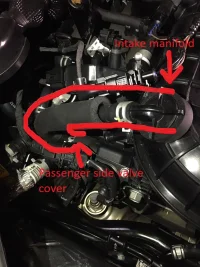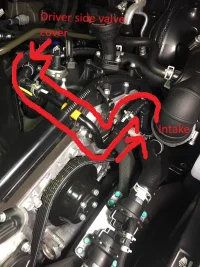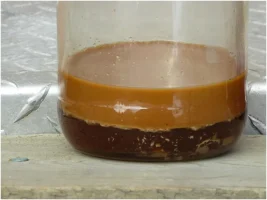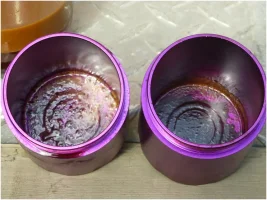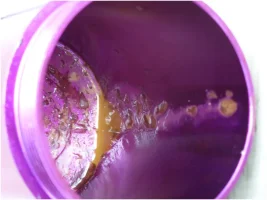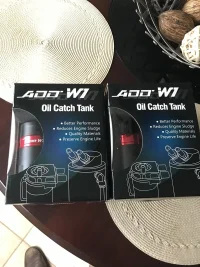Giving you something more to contemplate:
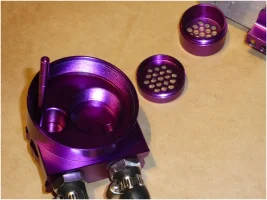
INSIDE OF THE CAN’S HEAD:
TO THE LEFT THE SMALL INCOMING PORT, TO THE RIGHT THE LARGER OUTGOING PORT WITH THE DISASSEMBLED BAFFLE THAT WOULD FIT INTO THE THE LARGER HOLE.
ALL PARTS INCLUDING THE CAN ARE MACHINED FROM BILLET ALUMINUM. I CONSIDER THESE CANS WELL MADE, EXCEPT FOR THE INCLUDED HOSES WHICH COLLAPSED
AS SOON AS VACUUM WAS APPLIED
AND THE O-RING BETWEEN HEAD AND CAN, WHICH HAD TO SCRAPED OFF.
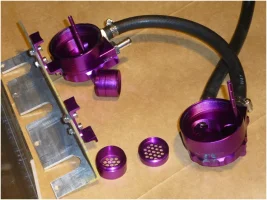
THE TOPS OF THE TWO CANS WITH THE ALUMINUM BRACKET THAT THE CANS ARE MOUNTED TO – EVERYTHING UPSIDE DOWN OF COURSE.
THE STICKS STICKING UP UNSCREW FROM THE TOP AND ARE USED TO GAUGE THE CONTENT….
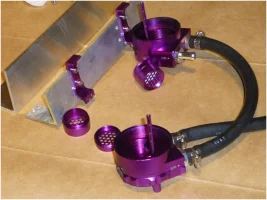
THE NEW 2” x 3” ALUMINUM ANGLE FOR THE NEW BRACKET.
I LIKE TO MOUNT THE CANS A ¼” OR SO LOWER, AND I AM RUNNING OUT OF MATERIAL ON THE BOTTOM END OF THE ORIGINAL PIECE AS YOU CAN SEE.
I ALSO STARTED FILLING UP ONE OF THE BAFFLES WITH DISCS CUT FROM KITCHEN PAPER TOWEL MATERIAL.
THAT ALSO GOT ME TO THINK WHETHER THE IN & OUT PORTS SHOULD BE REVERSED.
THE FILTER MATERIAL WOULD OBSTRUCT THE
INCOMING VAPORS IN THE ORIGINAL CONFIGURATION.
BY REVERSING THE PORTS, THE VAPORS WOULD HAVE AN EASY ENTRY, BUT GET FILTERED ON THEIR WAY OUT, THEREBY KEEPING THE HOSES CLEANER…



